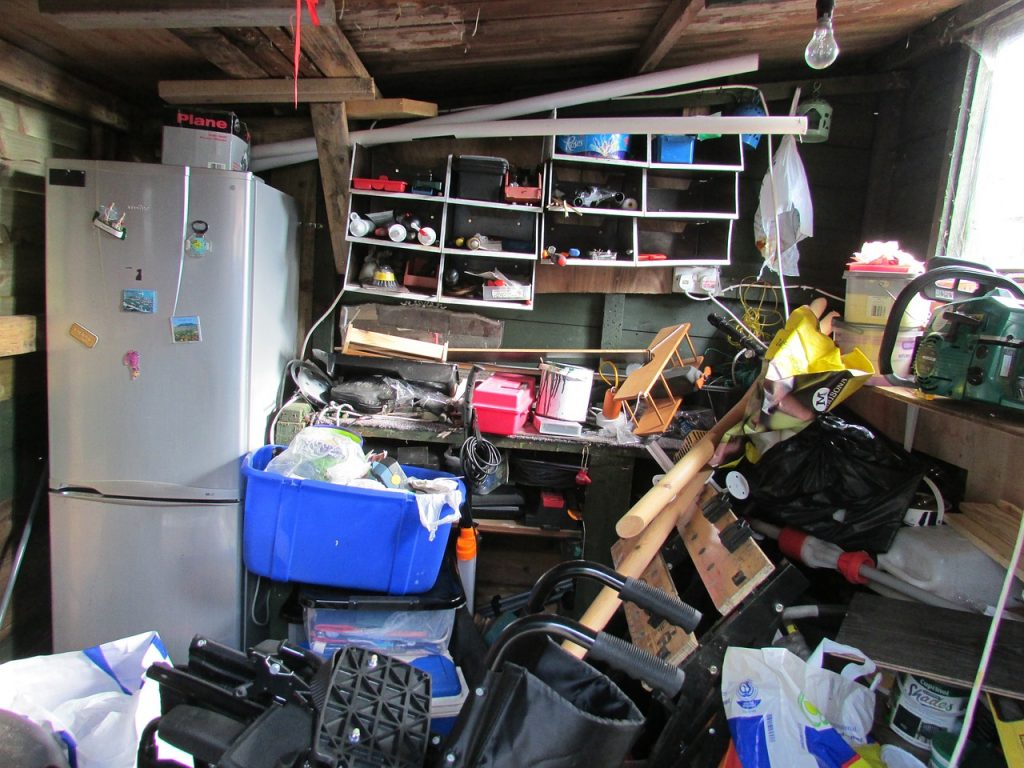
A couple weeks ago I was helping a friend empty out the storage unit that he had rented to store his office fixtures and furniture after closing down his office space. His unit was among hundreds of other similar units in a five story climate controlled building with security cameras, personal key codes for off-hour access, and extra-large elevators for customers to move in their things.
Self-storage is an interesting concept. Behind these rows of yellow corrugated metal doors are rooms filled with items that people couldn’t bear to throw away. Instead, they are paying monthly rent for space not for people to live in, but to store things so they can make more room at home to buy even more things.
To get a look at what is being stored in public storage, one only needs to check out the reality show Storage Wars, where those corrugated doors are rolled up to reveal furniture, appliances, piles of old clothes, and stacks of boxes containing household items and various knick-knacks.
The Self Storage Association has published some facts on the self-storage industry:
- Some 65% of all self-storage renters have a garage; 47% have an attic in their home; and 33% have a basement.
- The distribution of U.S. self-storage facilities is: 52% suburban, 32% urban, and 16% rural.
- Occupancy rates for self-storage facilities as of Q2 2015 were 90%
- Approximately 9.5% of all American households currently rent a self-storage unit.
The above statistics show that we as a society own too much stuff. Drive down the street of any neighborhood and see how many houses you can count with vehicles parked in their driveway. For many of these houses, their cars are outside because their garages, attics, and basements are overflowing with stuff.
Over half of the people who rent storage units live in the suburbs. In 1973 the average house was 1525 sq. feet. The Census Bureau report on “Characteristics of New Housing,” shows that for 2015, the average size of new houses built has increased to an all-time high of 2,687 square feet.
While houses have gotten bigger, household sizes have been decreasing, from 3.01 persons per household on average in 1973 to 2.54 persons per household by 2015. All that extra space in a modern home is now being used to hold things; many times things that were used in the past but are not being used currently.
It is not uncommon for people to upgrade to a larger home when their current house starts getting cramped from all the things they’ve accumulated over the years.
Why do we keep all this stuff instead of donating, discarding, recycling, or selling it? For many, it may be for sentimental reasons. For others, it is because they are convinced that it is better to keep something around just in case they might need it again one day in the future.
By minimizing and reducing the number of things we own, our lives will become less stressful from the clutter that is suffocating us. It allows us to be more flexible when we need to relocate for better jobs. Instead of buying bigger houses in the suburbs further away from work, we can make do with less space in the city, giving us more time to spend on the things that matter instead of sitting in a car in traffic.
Do you have things that are just taking up space in your home? Are there things you can get rid of that you won’t miss?
